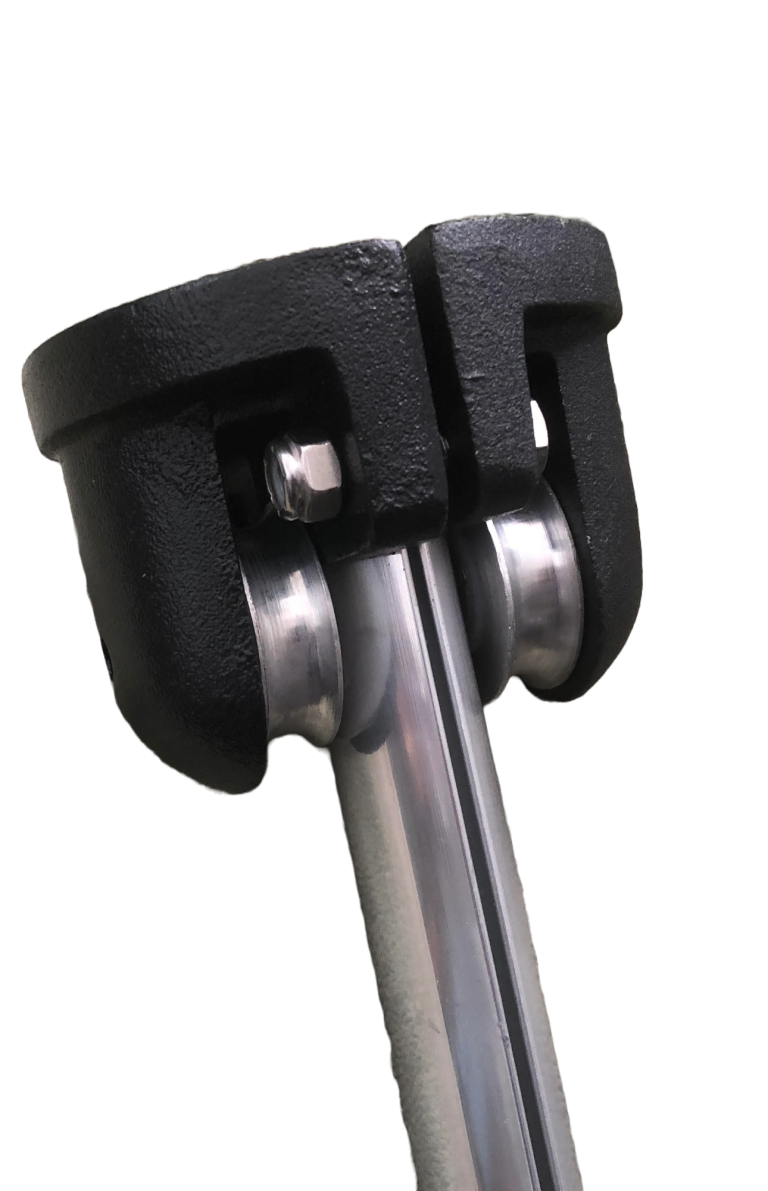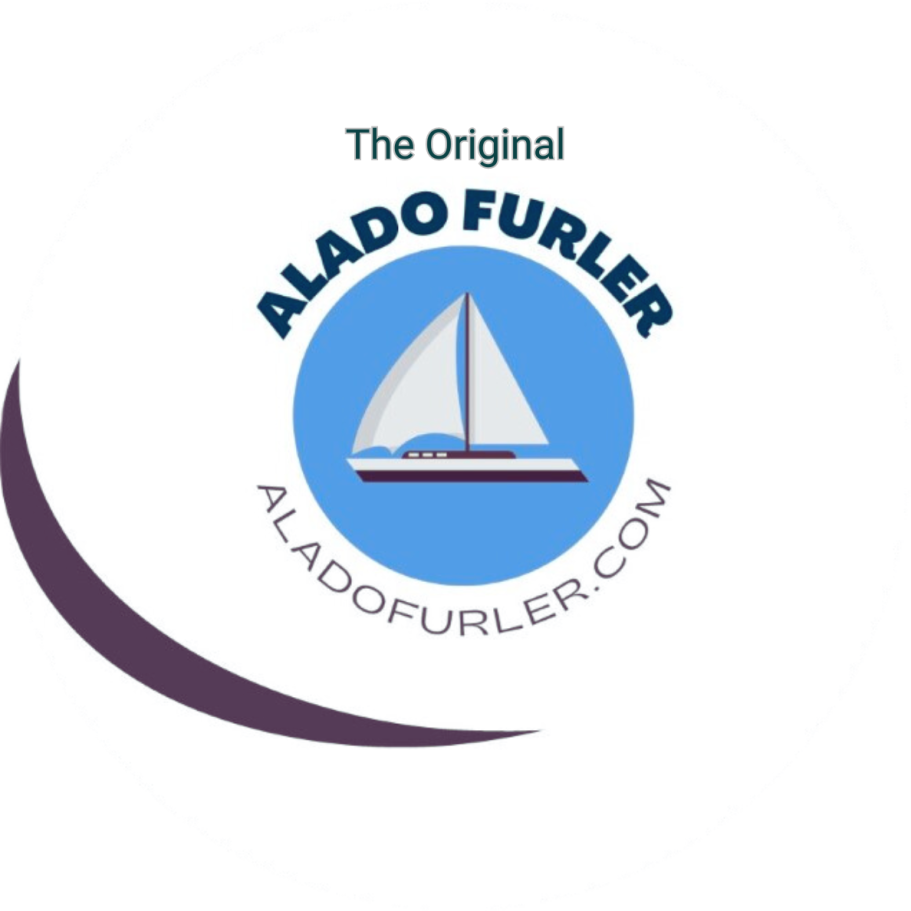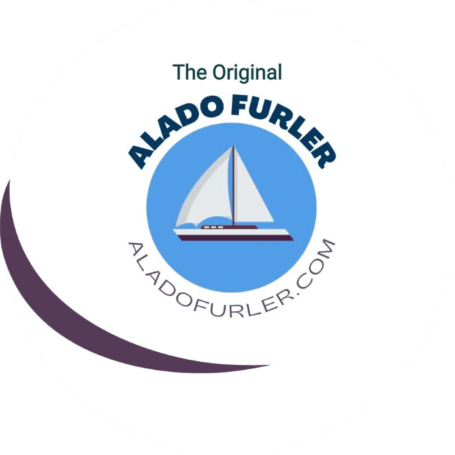How Alado Works
Halyards
The Alado system uses its own halyard (s) which run vertically along the foils.
This feature eliminates the need for a Jib Halyard and prevents dangerous Halyard Wrap, which can destroy the stay.
Top Assembly
Our Top Sheave assembly is made of cast aluminum.
The point of assembling two pieces around the interlocking foils is to allow the user to assemble and disassemble the system easily.
The first two foil lengths in the top sheave are 5 foot and 2.5 foot respectively.
Interlocking Aluminum Foils
Our interlocking aluminum foils provide full lateral strength of the entire foil. A mechanical fastener is not used but we provide a long-lasting neoprene bushing to prevent galvanic reaction between the stay and the foils.
Both sides of the foils have Luff Feeds for two sails or just a spare.
Drum Assembly
The drum consists of an inner and outer section using a Delrin sleeve for permanent lifelong wear.
The outer lower drum is secured to the solid Bow Rail, by means of a braided line or a stainless-steel tube with a rail fitting. The advantage of this means no stress on the chain plate and easy access to the turnbuckle.
Questions?
Call, Text, WhatsApp Us or Email



Roller Furling Designs and Applications

Since the first conceptual idea of sailboat roller furling was developed in 1907 by Major E du Boulay in England, the "build a better mousetrap" philosophy has improved the design and performance of many roller furling systems which is a positive for sailors.
There have been many years of debate and interpretation by sailors, rigging experts and “armchair” critics about systems and applications.
The result can often be a very confusing and sometimes uninformed opinion base by some authors of what is available and what works best.
Most of the articles that we found online identify 3 types of Roller Furling systems:
Head Swivel, Wire Luff and Internal Halyards.
Each of which has its own unique design characteristics and challenges when things go awry...
Head Swivels that can fail and twist halyards.
Wire Luff Furling - hard to reef when loaded, sagging tendency.
Internal Halyards -inside the extrusions are hard to increase tension under load and not easy to change sails.
But wait… they missed the best one…
The Alado Roller Furler ... Independent Halyard(s) / Self Standing / No Bearings to Fail system that assembles on deck without going aloft.
Alado Roller Furler uses a simple but effective design that addresses three very important aspects that appeals to cruisers and racers alike.
NO Swivels or Bearings
This means zero chance of Jib Halyard Wrap and Failure.
If you have experienced other roller furling systems that use a Jib Halyard to "lift" the sail up, then you probably know that a swivel must be used to prevent twisting of the halyard. But..., what happens when the swivel ceases to work? The Jib Halyard becomes twisted and eventually breaks...leaving you without a sail.
Similarly, with bearing loaded drum systems, if the bearings fail, you are either unable to deploy or even worse, unable to retract.
External /Independent Halyard(s)
Install two halyards and use either as a system spare or use both to be used with the included double luff feeds.
The independent halyards run along the outside of Alado's exclusive interlocking aluminum foils.
Form an "endless loop" of each halyard between the Top Sheave and the Drum with the bitter ends both fastened to the top of the sail and the excess line is fastened to the Drum.
(1) This allows the sail(s) to be hoisted independently.
(2) Full tension can be applied without affecting the shape of the sail under any wind load and does not put any tension on the forestay rigging.
(3) "What you see is what you get" meaning that a visual inspection of the halyards is possible just like all external halyards
(4) this frees up the Jib Halyard for other uses such as winching a dinghy on deck, rescuing an overboard object and even making fast that favorite Bow Hammock!



We need your consent to load the translations
We use a third-party service to translate the website content that may collect data about your activity. Please review the details in the privacy policy and accept the service to view the translations.


